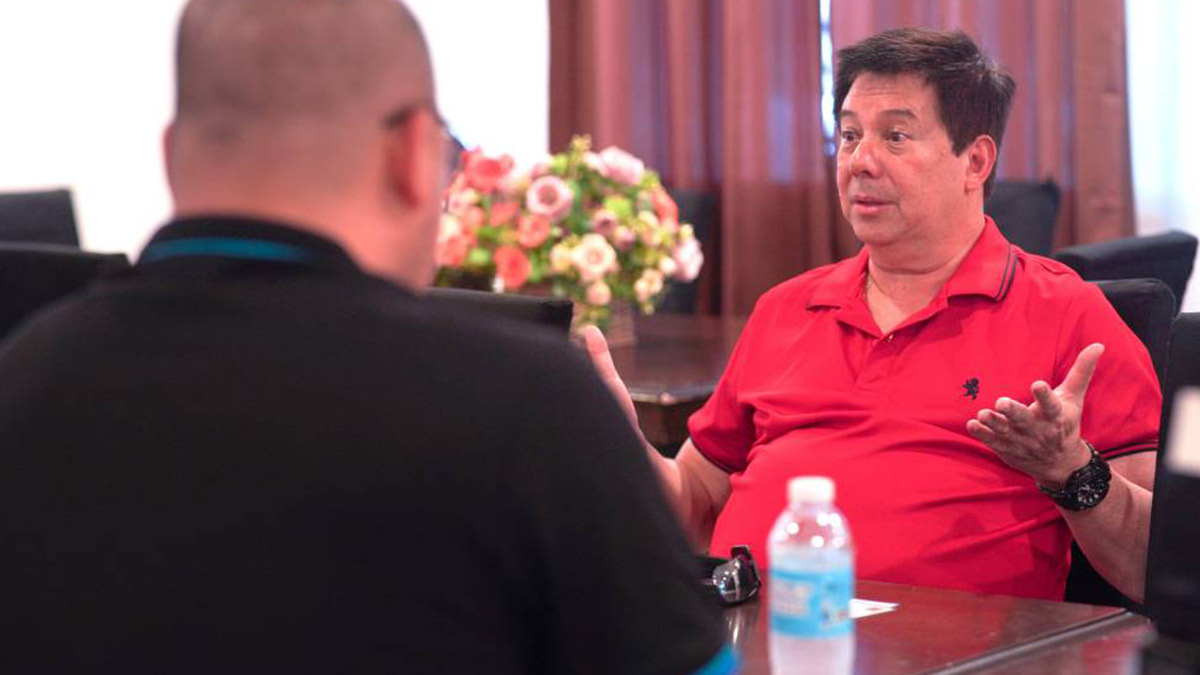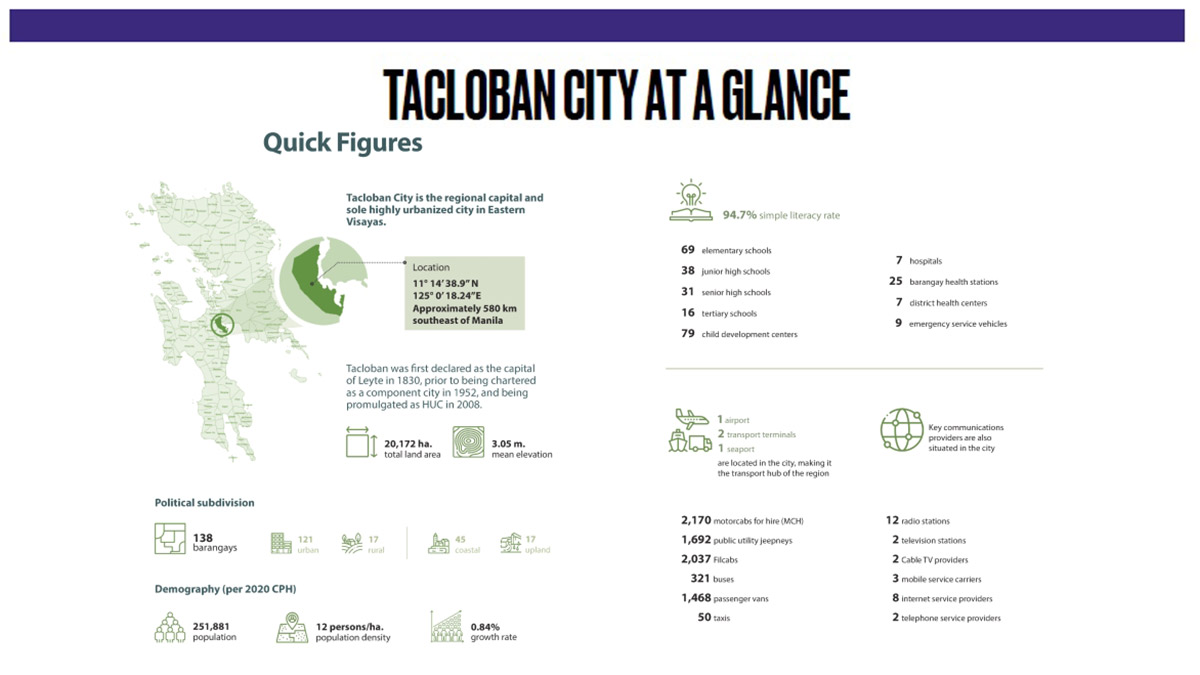Tacloban, Ormoc driving Eastern Visayas growth
EDITOR’S NOTE
The Philippine Daily Inquirer’s Spotlight series that focuses on vibrant and growing economic, cultural and political centers outside Metro Manila is kicking off its second year with this issue on Eastern Visayas.
Eastern Visayas or Region 8 is comprised of the provinces of Northern Samar, Western Samar, Eastern Samar, Leyte, Southern Leyte and Biliran with Tacloban City as the regional center.
The region that lives with the risks and benefits that come with facing the Pacific Ocean has unfortunately not ranked high on development programs.
This explains why pervasive poverty remains a major challenge confronting local officials.
But its prospects are steadily improving with the increase in investors as well as tourists who have come to appreciate what the region has to offer.
Spotlight Eastern Visayas offers a glimpse of what those prospects are and the opportunities just waiting to be tapped for the region to reach its full potential.

BIG PLANS Tacloban City Mayor Alfred Romualdez is bullish on the growth prospects of the city and the region. —ARCHIE OMEGA
TACLOBAN CITY—The cities of Tacloban and Ormoc in Leyte province are no longer just gateways to Eastern Visayas.
These cities have turned themselves into the business and tourism hubs in the region, which has been hounded for decades by high poverty incidence and devastating calamities.
Both Tacloban Mayor Alfred Romualdez and former Ormoc Mayor and now Leyte Rep. Richard Gomez have taken steps to attract investments and bring in tourists to these two anchor cities of the region.
These include offering incentives like tax holiday and ensuring that vital infrastructure, like road networks and a stable supply of power and water are in place.
Romualdez is confident that the economy of Tacloban will continue to flourish, noting that big investors like the SM Group have signified their intention to do business in the city.
Recovery effort
Gomez, for his part, said Ormoc had become “one of the most exciting rising cities in the country.”
“Now is the perfect time to invest in Ormoc when we are still on the rise, and that means, early investors can still ride the wave of what is happening right now,” said Gomez, who served two terms as city mayor before taking over the congressional seat vacated by his wife, Lucy Torres-Gomez, in 2022. Torres-Gomez is now the city’s mayor.
Both Tacloban and Ormoc were hit hard by Supertyphoon “Yolanda” (international name: Haiyan) in November 2013, which flattened these Eastern Visayas cities and killed thousands of people along its path.
Just as the cities were recovering from Yolanda, another kind of catastrophe struck: COVID-19. The pandemic stopped all economic activities in Tacloban, Ormoc, and the rest of the country, as people stayed home as part of the health protocol to prevent the spread of the virus.
At the height of the pandemic in 2020, 7,247 business establishments were operating in Tacloban, lower than the 12,900 registered businesses before the onslaught of Yolanda.
This year, there are 8,319 establishments doing business in Tacloban with capital investments reaching P326 million, employing 158,755 people, with only a fraction of whom are from outside the city, records from the city’s Business Permit and Licensing Office showed.
The city government collected P272 million in permits and other fees from these establishments in 2023. Still, Tacloban remains dependent on the national tax allocation (NTA), formerly known as internal revenue allotment, from the national government. This year, Tacloban’s NTA stands at P1.16 billion with its local income pegged at P747.57 million.
Romualdez recalled that during the pandemic, he quietly allowed businesses, like those in the food and transport sectors, to continue operating to keep the city afloat, despite directives from national agencies to shut them down.
He also entered into agreement with hotel owners that designated their establishments as quarantine centers at half their usual room rates.
Looking ahead
Ormoc’s economy is also on the upswing, with improved peace and order situation after Gomez took over as mayor in 2016.
Ormoc, Gomez said, has so much to offer to investors, among these a workforce that is highly skilled, hardworking and friendly.
Power supply is also abundant in Ormoc, which, along with neighboring Kananga town, hosts the Energy Development Corp., the world’s second biggest geothermal power source.
Connectivity in terms of infrastructure is no longer a problem in Ormoc with the presence of roads, diversion roads and seaport that connect the city to other provinces.
Soon, Ormoc will have its own airport as alternative gateway to the region. At present, the Daniel Z. Romualdez (DZR) Airport in Tacloban operates as the main airport in the region.
“Looking ahead five to 10 years, we envision achieving remarkable progress in enhancing its natural landscapes, nurturing its cultural heritage, and fostering a thriving community where residents flourish personally and professionally. How do we do this? We invest in experts to help us in urban planning and sustainable development,” Gomez added.
At present, over 8,600 businesses are operating in the Ormoc, even as the city remains largely dependent on NTA, like Tacloban. In 2023, Ormoc’s annual income was at P523.93 million with its NTA placed at P1.54 billion.
Tourism receipts
Both Tacloban and Ormoc are also positioning themselves as tourist destinations.
Tacloban, home to the iconic San Juanico Bridge that links the islands of Leyte and Samar and the Santo Niño Shrine built by former first lady Imelda Romualdez Marcos, was visited last year by 389,494 tourists — 12,090 of whom were foreigners, based on the records of the Department of Tourism (DOT) in Eastern Visayas.
Their visit to the city generated P9.95 billion in earnings for the industry’s stakeholders, constituting 29.57 percent of Eastern Visayas’ tourist receipt of P33.65 billion last year.
Tacloban has 82 hotels and accommodations with room capacities of more than 2,300.
The city government is also planning to build a convention center of international standard that can accommodate more than 5,000 guests.
Ormoc, famous for its sweet pineapples and tourist drawer Danao Lake, welcomed 76,593 guests in 2023, with foreign guests reaching 2,746, according to records from the DOT.
The same records showed that the leisure travelers contributed P1.95 billion in tourism receipts, or a 5.61-percent share of the regional tourist receipts.
Records from the Ormoc tourism office, however, showed a higher figure — 1.81 million tourist arrivals last year.
Romualdez said he welcomed the economic and tourism progress in Ormoc and other provinces in Eastern Visayas because it would also benefit Tacloban.
“I don’t really mind, for example, that there are more projects in Samar because the more they became accessible, the more it benefits Tacloban,” Romualdez said.
Main hub
“(Our) role as a capital city is to provide all the basic needs of the people so they don’t go anywhere else. That’s why the major schools are here,” he said.
Aside from four universities, Tacloban has five private hospitals and the city government-run hospital, as well as the Eastern Visayas Medical Center, the region’s biggest public hospital operated by the Department of Health.
Tacloban also hosts 17 banks and 12 lending institutions.
Eastern Visayas’ premier airport, the DZR Airport, is also operating in Tacloban, which offers 21 flights daily, catering to Cebu and Manila flights.
The airport is currently undergoing a major rehabilitation to accommodate more flights and bigger commercial planes.
Tacloban, the only highly urbanized city in the region, has a population of 251,881, based on the 2020 census of the Philippine Statistics Authority.
But with major utilities and business centers operating in the city, it is not surprising that its daytime population may even reach up to a million, Romualdez said.
All the regulations and policies formulated by his administration, said Romualdez, meant that he only wanted to level the playing field and make the city business-friendly to everyone who wants to invest in Tacloban in order to maintain the momentum of its economic progress.
So far, it is working. INQ

